The use of seaweed as human food originally began in countries like China, Japan, and the Republic of Korea.
Inhabitants of the coastal areas of Malaysia and Indonesia have also eaten fresh seaweed as salad components.
In recent years, seaweed has become popular in other countries such as France, Ireland, the USA, Canada, among others.
Now, while you could buy packaged seaweed at a health store, you can also harvest them at the beach.
Seaweed foraging is a fun outdoor activity that allows you to explore and learn.
Read on to find out the edible seaweeds you can harvest and how to do it.
What Is Seaweed?
Seaweeds are macroscopic marine algae, and they’re divided into three main groups by pigmentation. That is brown, red, and green seaweed.
Brown seaweed such as kelp is found in cold sea waters such as those in the northern hemisphere.
They can grow up to 300 feet long and four inches wide. Brown seaweed may sometimes appear to be green in color.
Green seaweed lives in warm sea waters in areas such as the Southern Pacific or Caribbean waters.

Their color ranges from a yellowish-green to a dark greenish-brown.
Red seaweed has vivid pink pigments but may sometimes appear to be brown.
The pigments protect them against sunburn and high temperatures.
An example of red seaweed is the dulse which is only found on the Northern Atlantic shores.
Edible Seaweed Types
Most seaweeds are edible, with only a few unpalatable exceptions.
Here are the most common edible seaweeds you can look out for.
Nori/ Purple laver

This sheet-like seaweed is purplish-black and is among the most nutritious.
Used mainly as a luxury food, Nori is often wrapped around the rice ball of sushi.
It’s also used as a raw material in the production of jam and wine.
In Chinese cuisine, Nori is used in soups and as a seasoning in fried foods.
Kombu/ Oarweed
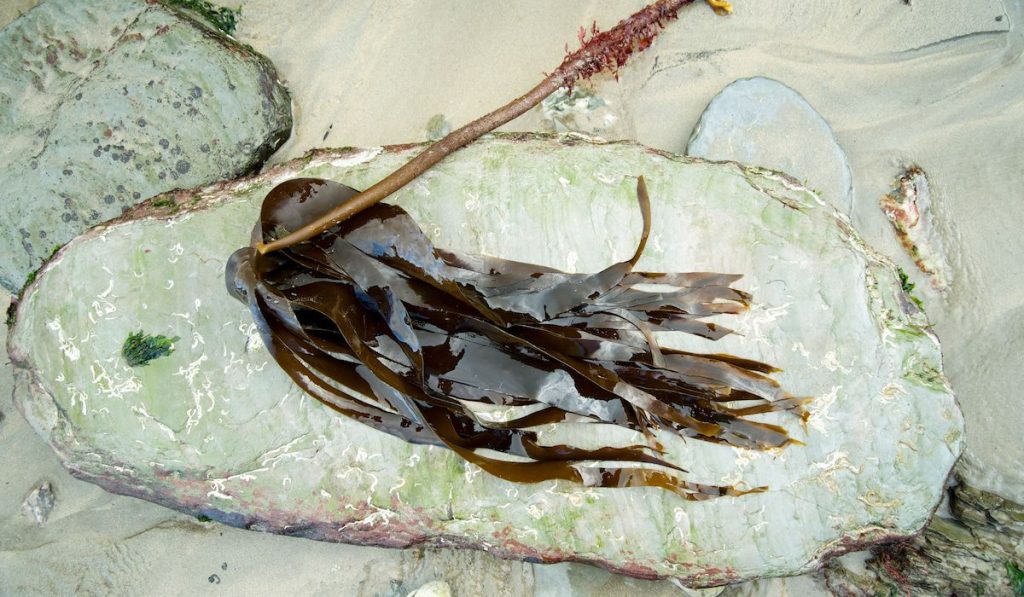
Kombu is a kelp variety, and it’s brown. While foraging, you are likely to find it in the lower tidal zone.
Its appearance is that of a flat leaf-like structure.
Dried Kombu is used to make kelp broth or stock (Kombu Dashi) by soaking then simmering it.
Kombu dashi is great for sick people as it boosts immunity.
In addition, you can cut up Kombu and use it for cooking other foods.
Dulse
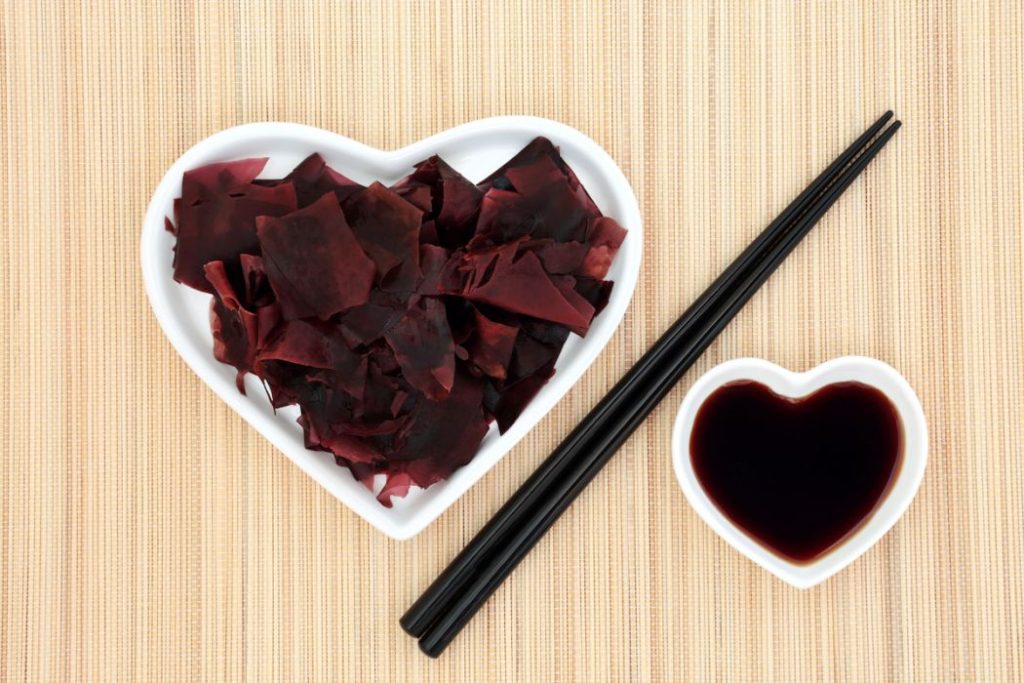
This is a red seaweed that has leathery fronds.
Dulse is mainly found in Ireland and Eastern Canada on the shores of the Bay of Fundy.
Its harvest season is between mid-May and mid-October.
You can pluck it by hand from the rocks at low tide.
Dulse quickly deteriorates, so you should sun dry it for 6-8 hours for preservation.
In Ireland, it is eaten raw, cooked with potatoes, or in soups and fish dishes. It’s a highly nutritious source of iron and other minerals.
Wakame

This brown seaweed is mainly found on the rocky shores and bays of Japan, China, and the Republic of Korea.
You can also find an Atlantic Wakame variant in countries such as France, New Zealand, and Australia.
Wakame has a high fiber content and is low in fats. You can eat it raw by incorporating it into a salad.
When dry, it’s used in making soups and sauces. Additionally, it can be used as a wrapping for fish.
Irish moss/ Carrageenan moss
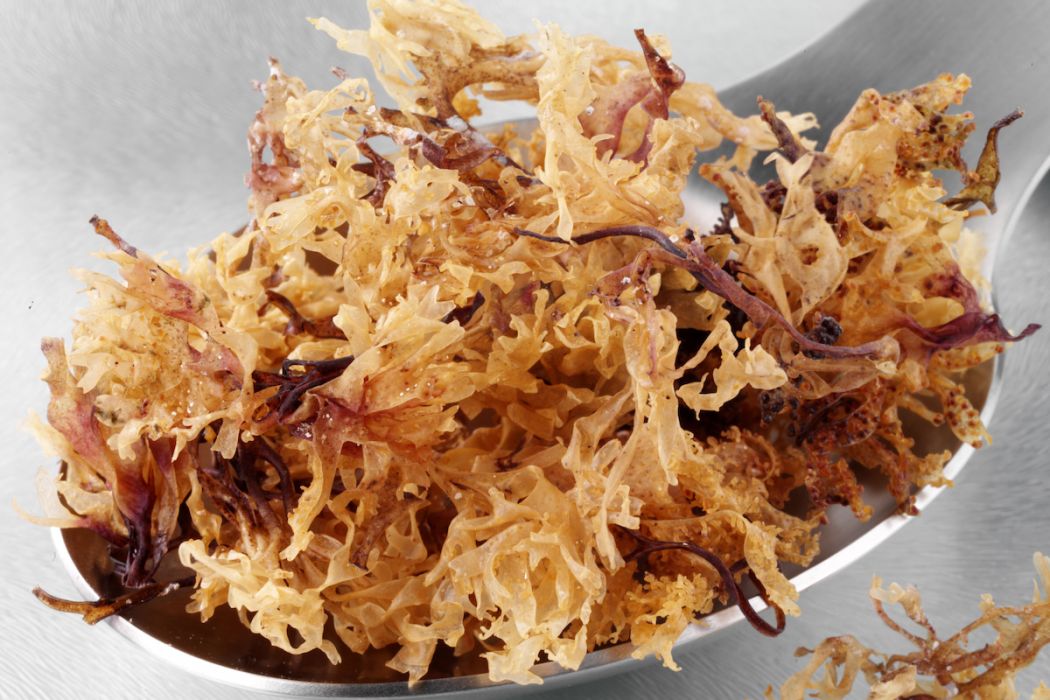
Irish moss has historically been used in foods in Ireland and some parts of Europe.
It’s mainly used for its thickening powers when boiled in water and not as something to eat by itself.
Most people add it to jellies, puddings, ice cream, and mousses.
There is another strain of the Carrageenan moss in Japan named Hana nori, which is yellow.
It’s used in sashimi garnishes, seaweed salads, and as a soup ingredient.
Sea Lettuce (Ulva lactuca)
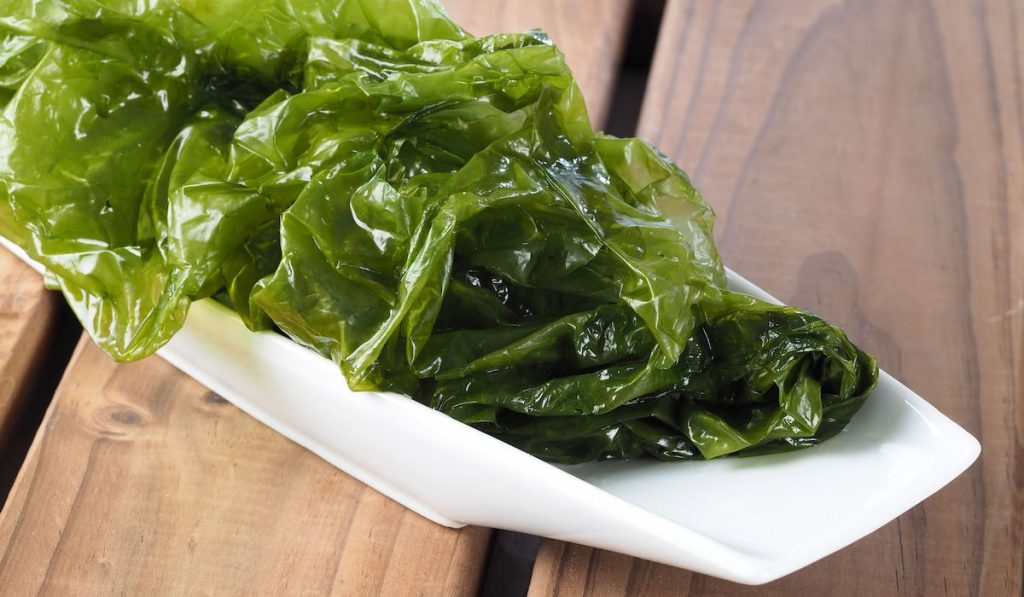
Sea lettuce is a thin sheet-like, green seaweed with wavy edges that resembles wilted lettuce. You are likely to find it in shallow waters.
Sea lettuce is used in soups and salads in some parts of the world.
Bladderwrack
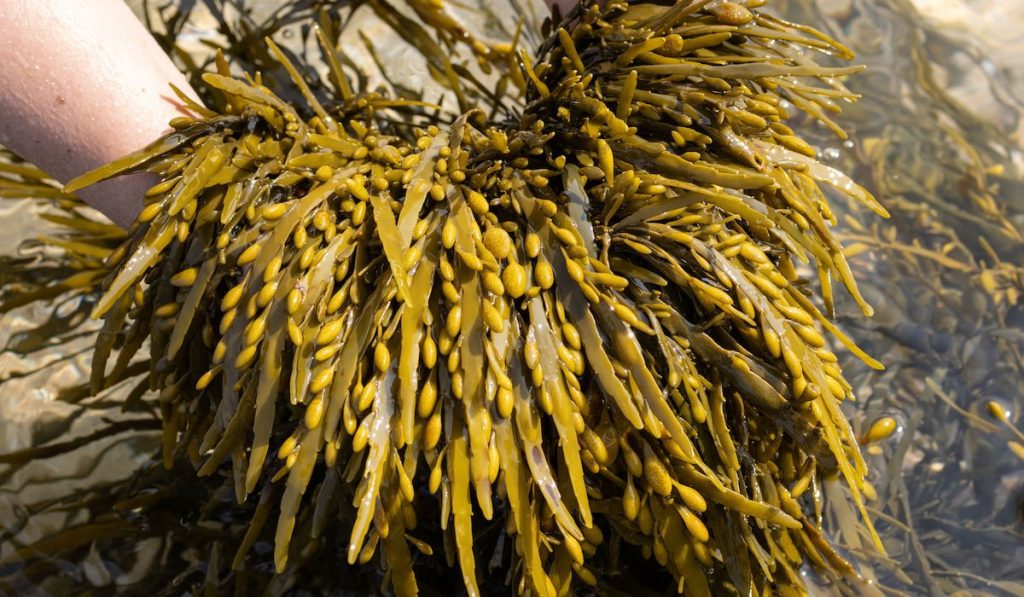
This brown seaweed is identified by its strap-like branching fronds, with air-filled bladders along their length. It grows on rocky mid-shorelines.
Bladderwrack is high in iodine and was medicinally used to treat goitre.
It’s now used in making anti-aging creams as it has anti-aging properties.
In addition, Bladderwrack is safe for consumption and can be eaten raw or cooked.
You can also dry and grind it to have bladderwrack tea.
That said, Bladderwrack should be consumed in low quantities due to its high iodine content.
Foraging For Seaweed
Unlike foraging for fruits, greens, or mushrooms, seaweed foraging is quite beginner-friendly.
This is because there are no poisonous seaweeds.
The only difference is that some are more palatable than others.
So here’s what you need for your seaweed foraging activity:
- A pair of waterproof gloves
- Appropriate footwear such as rain boots
- A collection bucket
- A sharp knife or scissors or garden clippers
Tips for Foraging Seaweed
- Go when the tide is low, so you can safely wade into the shallow waters. You can look up the tidal information online or buy a tidal timetable.
- Alternatively, you can go to the beach after a big storm and harvest the fresh seaweed just washed ashore.
- Do not pull the seaweed off the rock as you will kill and it won’t grow again. Instead, cut no more than half of any given seaweed so that it continues to grow.
- Harvest at different spots to avoid depleting the population in one place.
- If you can, have someone else accompany you. This is essential since you could slide on a wet rock and get hurt.
Washing and drying seaweed
Once you get your seaweed home, wash them in a big tub of water to remove the dirt. Then, hang them on a rack or line to dry.
If you have harvested some pepper dulse, you can put them in a dehydrator or a low oven. Once dry, you can store your seaweed in glass jars.
Parting Shot
Adding seaweed to your diet is a great choice, given how nutritious they are.
Go out there and get yourself some seaweed; it’s quite an adventure! Try out some online seaweed recipes and see what you like.





